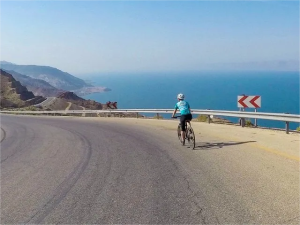Irish Stone Forts – A Ring of Stone Soap Opera
- by Mohamed Adam

Ireland’s lush green landscapes and rolling hills are punctuated by some of the most evocative and enduring symbols of medieval history: stone castles. These ancient fortresses, which dot the Irish countryside, are not just architectural marvels; they are testimonies to a rich and tumultuous past. From defensive strongholds to grand residences, Irish stone castles offer a fascinating glimpse into the island’s history, culture, and artistry.
The history of Irish stone castles begins in the early medieval period, around the 12th century, when the Normans brought their architectural prowess to Ireland. The first castles were constructed using wood and earth, but the introduction of stone marked a significant evolution in defensive architecture. By the 13th century, the shift to stone construction had solidified, with castles becoming more formidable and enduring.
Early stone castles were primarily built by Anglo-Norman settlers and were designed with defense in mind. Features like thick walls, battlements, and moats were crucial in warding off both rivals and invaders. Over time, as peace became more common, the functionality of these castles shifted from purely military to more residential and administrative uses.
On our adventurous trip to Ireland, we came upon two stone forts near the town of Cahersiveen (CARE-HER-SAH-VEEN) along the Ring of Kerry.
The stone ring forts, Cahergall (CARE-HER-GAL) and Leacanabuaile (LACK-AN-NAH-BYOO-LAH) are two of the most well-preserved stone forts in the region. These types of structures have many names to describe them, such as stone fort, stone ring fort, ringfort, and fairy fort.
Origin of Irish Stone Forts of Cahersiveen
Although no specific dates are established for the construction of these forts, iron artifacts suggest they were likely built by early Christian settlers sometime between 600 and 900 AD. Stone forts were a step up from the typical earthen ring forts, and most likely built to protect farmsteads of well-to-do landowners.
The partially reconstructed Leacanbuaile stone fort sits high on a rocky hill, with an inside diameter of 21 metres (70 feet) and 3 metre (10 metre) thick walls. It is protected on three sides by steep slopes. Several interior walls are present, representing different rooms. There is also an apparent entrance to a tunnel that once led outside the fort, (possibly an escape route).
A short walk away, the fully reconstructed Cahergall ring fort is a formidable sight, with a diameter of 25 metres (82 feet), wall heights up to 6 metres (20 feet) and a 5 metre (15 feet) wall thickness. Multiple sets of steps constructed into the tiered wall allows easy access to the top of the wall and the astounding views of the surrounding landscape.Within the fort lies a small circular fort.
Enough of the actual history and descriptions. Let’s get into the soap opera lore surrounding these stone forts.
A Tragic Ringfort Romance
This rather tall tale of Irish tragic romance, connects one of the most famous historical Irish folk heroes with the stone forts of Cahersiveen. Are you intrigued?
The town of Cahersiveen, is also spelled Cathair Saidhbhin. Stay with me here.
Cathair means ‘ring fort’, and Saidhbhin means ‘little Sadhbh’. In other words, the ‘ring fort of little Sadhbh’
Sadhbh (SIVE) was a beautiful young lady who rebuffed the advances of Fer Doirich (FEAR-DOOR-EEH), a wicked Druid sorcerer. He became so enraged, he turned Sadhbh into a deer.
Dear Oh Deer
Soon after, Sadhbh came to learn from a reliable source that the spell could be broken if she managed to get into one of the stone ring forts. Now the dwellers of these ring forts were a group of warriors known as Fianna. Sadhbh spent the next three years miraculously evading predators and hunters as she searched for the Fianna.
Ironically, those she was trying to find were skilled hunters. This could get interesting!
Ireland’s lush green landscapes and rolling hills are punctuated by some of the most evocative and enduring symbols of medieval history: stone castles. These ancient fortresses, which dot the Irish countryside, are not just architectural marvels; they are testimonies to a rich and tumultuous past. From defensive strongholds to grand residences, Irish stone castles offer…




